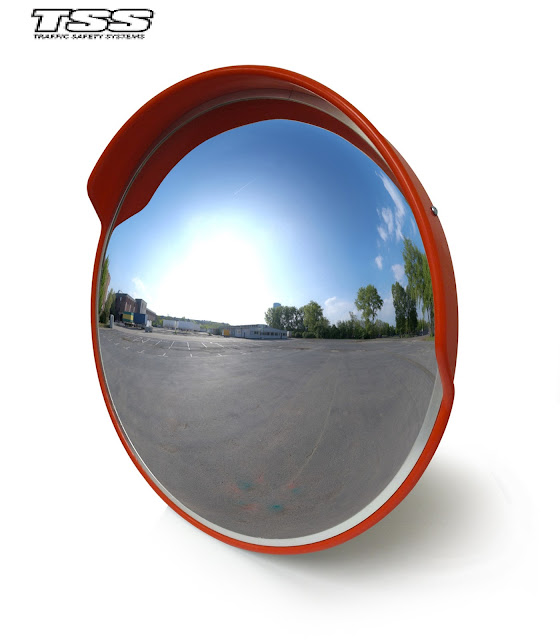The Ultimate Guide to Convex Mirrors for Easy Navigation and Safety
Welcome, readers! We are thrilled to delve into the fascinating world of convex mirrors in this comprehensive guide. Convex mirrors are unique in shape and function, offering a wide range of benefits for enhanced visibility and safety.
In this guide, we will explore what convex mirrors are, why they are advantageous, how to choose the right one, installation steps, maintenance tips, and address some commonly asked questions. So, let's get started!
What are Convex Mirrors?
Convex Mirrors Online are curved mirrors with a bulging outward shape. Unlike flat or concave mirrors, convex mirrors cause light rays to diverge, resulting in a wider field of view. This unique shape allows for a greater range of visibility, making them ideal for areas with restricted views or blind spots.
Understanding the Benefits of Convex Mirrors:
Convex mirrors offer numerous advantages that make them an essential tool for improved safety and navigation.
Firstly, their wide-angle visibility eliminates blind spots, reducing the risk of accidents and ensuring better awareness of surroundings. Whether in crowded parking lots, driveways, or tight corners, convex mirrors provide a broader view, allowing drivers or pedestrians to anticipate potential hazards.
Additionally, convex mirrors play a vital role in enhancing security. By strategically placing convex mirrors in areas prone to theft or vandalism, such as retail stores or warehouses, they act as a visual deterrent, discouraging potential criminals from engaging in illegal activities.
Choosing the Right Convex Mirror:
Finding the right convex mirror for your specific needs requires careful consideration of size and placement. The size of the mirror should be proportionate to the area it will cover, ensuring optimal visibility. For instance, a larger convex mirror may be more suitable for a large parking lot, while a smaller one can be effective in a residential driveway.
When it comes to mounting options, there are two primary choices: wall-mounted and pole-mounted. Wall-mounted mirrors are secured directly onto a wall or building, while pole-mounted mirrors are attached to a pole for greater flexibility in placement. Factors such as location, available space, and the desired angle of visibility should be taken into account when deciding on the mounting option.
Installation Steps:
Step 1: Planning
Before embarking on the installation process, it is crucial to plan ahead. Assess the location where the convex mirror will be installed and identify any potential obstacles that may hinder visibility. This includes considering the height, angle, and distance at which the mirror should be placed to provide the best view.
Step 2: Tools and Materials
Gather the necessary tools and materials to ensure a smooth installation process. This typically includes a drill, screws, brackets, and any additional hardware specific to your chosen mounting option.
Step 3: Mounting
Once the planning and preparation are complete, it's time to mount the convex mirror. Follow the manufacturer's instructions for your specific mirror model. If wall-mounted, mark the appropriate spots for drilling and secure the mirror using the provided brackets. If pole-mounted, attach the mirror to the pole using the designated mounting hardware.
Step 4: Adjustments
After mounting the convex mirror, it's essential to adjust the angle for optimal visibility. Stand in front of the mirror and ensure it provides a clear view of the intended area. Make any necessary adjustments to the angle until you are satisfied with the visibility it offers.
Maintenance Tips:
To maximize the longevity and performance of your convex mirror, regular maintenance is key. Here are some practical tips to keep in mind:
- Cleaning Techniques: Regularly clean the mirror surface using a non-abrasive cleaner and a soft cloth. Avoid using harsh chemicals that may damage the mirror or its protective coating.
- Inspection Frequency: Conduct routine inspections to ensure the mirror is free from dirt, debris, or any damage that may impair visibility. The frequency of inspections may vary depending on the location and environmental conditions.
- Minor Repairs: In the event of minor damages, such as scratches or cracks, consider repairing them promptly. Contact the manufacturer or a professional for guidance on suitable repair methods.
Frequently Asked Questions (FAQs):
- Can convex mirrors be used for indoor purposes?
Yes, convex mirrors can be used indoors as well. They are particularly useful in areas such as warehouses, retail stores, and hospitals where enhanced visibility is crucial for safety and security.
- Can I install a convex mirror myself, or should I hire a professional?
Installing a convex mirror is generally a straightforward process that can be done by yourself. However, if you are unsure or not confident in your abilities, it's always a good idea to seek professional assistance to ensure proper installation.
- Are convex mirrors weather-resistant?
Most convex mirrors are designed to withstand various weather conditions. However, it's advisable to choose a mirror with a sturdy frame and a weather-resistant coating for long-lasting durability.
Conclusion:
In conclusion, convex mirrors are an invaluable tool for improved safety and navigation. Their wide-angle visibility helps eliminate blind spots and enhances security in various settings. By choosing the right convex mirror, following the installation steps, and practicing proper maintenance, you can maximize their benefits and ensure long-lasting performance.
So, why wait? Start exploring the advantages of convex mirrors and experience safer and more convenient navigation today. Share your experiences and feedback with us in the comments section below. Safe travels!




Comments
Post a Comment